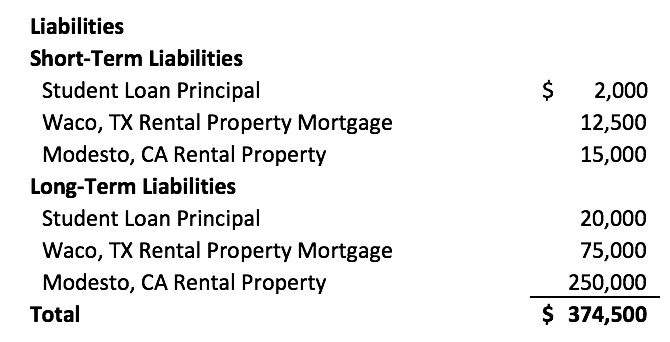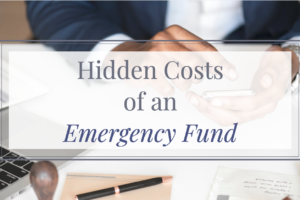One of the best ways to understand your financial situation is to create a personal balance sheet.
When you’re first starting out and trying to figure out your finances, it can be stressful and confusing, not knowing where to really begin.
A personal balance sheet is really helpful for removing some of that confusion because it will provide a clear picture of your financial situation.
It is kind of like a doctor’s report of your vitals. But, instead of cholesterol levels, you have debt levels.
What is a Personal Balance Sheet?
All businesses maintain a balance sheet to keep track of assets (cash, investments, property), liabilities (debt), and equity (earnings).
It provides a snapshot at a specific moment in time of a company’s financial health.
You can also create a balance sheet for yourself or your family.
Having a personal balance sheet can help you to keep track of your finances to easily understand your net worth and make financial decisions.
A personal balance sheet will include all your assets and liabilities which will provide a snapshot of your personal financial health.
Below we will go through the different assets and liabilities on your personal balance sheet and provide a personal balance sheet example.
First though, you need to determine where you’re going to create you personal balance sheet.
The first step in creating a personal balance sheet is figuring out if you will write down all of your information on a worksheet or type it into your computer.
You can use the examples below as a personal balance sheet template to build your own worksheet or spreadsheet.
Evaluate Your Assets
Assets include everything that you own that adds to your wealth.
Here are some common assets that you might have:
- Cash
- Investments like the holdings in a 401(k) or an IRA account
- Property like land, buildings, vehicles, valuable items like paintings or jewelry
- Provision for taxes – or the taxes you’ve already paid so far this year
A good way to think about if something is an asset is: can you sell it?
If it can be sold for a substantial amount (say over $500), you may want to include it in your assets.
While most businesses provide a list of basic assets, you should create a detailed list by specifying each individual asset.
Example of the Assets Section of a Personal Balance Sheet

Assess Your Liabilities
Liabilities include all your debts owed to other people including the bank, credit card company or your grandma.
Here are some common liabilities that people have:
- Credit Card Balance
- Student Debt Balance
- Property Mortgage
- Vehicle Debt Balance
Essentially, any amount that you owe to another person or entity should go in your liabilities.
One place of confusion related to liabilities is interest and principal.
You should only put the principal or the amount you would have to pay to rid yourself of the liability today.
It should not include any interest unless the interest is not being paid and therefore added on to the principal.
A lot of people do not pay the interest of their student loans while in college so this interest is added to the principal of the loans.
Here are two examples to provide some clarity:
Example 1: You owe $1,000 to your credit card company. You should put $1,000 on your balance sheet.
Your bill comes and you owe $15.00 in interest.
You decide to pay $115.00 which covers the interest and removes $100.00 from the principal.
Your liability on the balance sheet is now $900.00.
Example 2: You owe $1,000 to your credit card company.
You should put $1,000 on your balance sheet.
You pay $10.00 and the other $5.00 of interest added to the principal.
Your liability on the balance sheet is now $1005.00.
Short-Term vs Long-Term Liabilities
Short-term liabilities are liabilities that will be paid off within one year whereas long-term liabilities are liabilities that will be paid off over the following years.
You do not have to break down your liabilities into short term and long term but it does help provide a clearer picture of your liabilities.
Example of the Liabilities Section of a Personal Balance Sheet

*In the example above, we’ve separated portions of the loan balances. Short-term liabilities
Calculate Your Net Worth
Now that you have your assets and liabilities you can calculate your financial net worth by
Subtract e
When you know your net worth you know how close you are to your financial goals.
Do you have a positive net worth? If so, that’s great! A
If you have a negative net worth, do not worry. There are many people out there who are have a negative net worth, especially if you have high student loans.
We had a negative net worth for the longest time due to student loans and low savings.
For more on Net Worth, check out our post:
How Else Can You Use a Personal Balance Sheet?
If you have a negative net worth this is a great moment to make a plan for paying down your liabilities and increasing your assets.
A personal balance sheet is great helping you to create financial goals and financial planning.
It’s kind of like the saying: You have to know where you’re at to know where you’re going.
With a balance sheet, you know where you stand financially today.
So, where do you want to be in a year?
You could create a financial goal of increasing your net worth by $10,000.
So, how are you going to do that? Pay off debt or save and invest?
Maybe you want to do both so you decide you want to save and invest $3,000 and pay off $7,000 of debt.
With that you’ve created three financial goals and have a clear picture of what you need to do to achieve the goals.
Along the same lines, you can use your balance sheet to help with the financial planning.
Maybe you know that you need a net worth of $2.5 million to retire.
You can update your balance sheet periodically to know how close you are to hitting the milestones of your financial plan.
Final Thoughts
By creating your own personal balance sheet, you are able to more clearly set and achieve your financial goals.
It can be overwhelming to look at your financial information only to arrive at a negative net worth.
Don’t be discouraged.
Use your personal balance sheet and your calculated net worth to motivate you as you set new financial goals.
You can read more in our post about using your balance sheet to stay motivated.
YOU GOT THIS.





Leave a Reply
Your email is safe with us.
You must be logged in to post a comment.